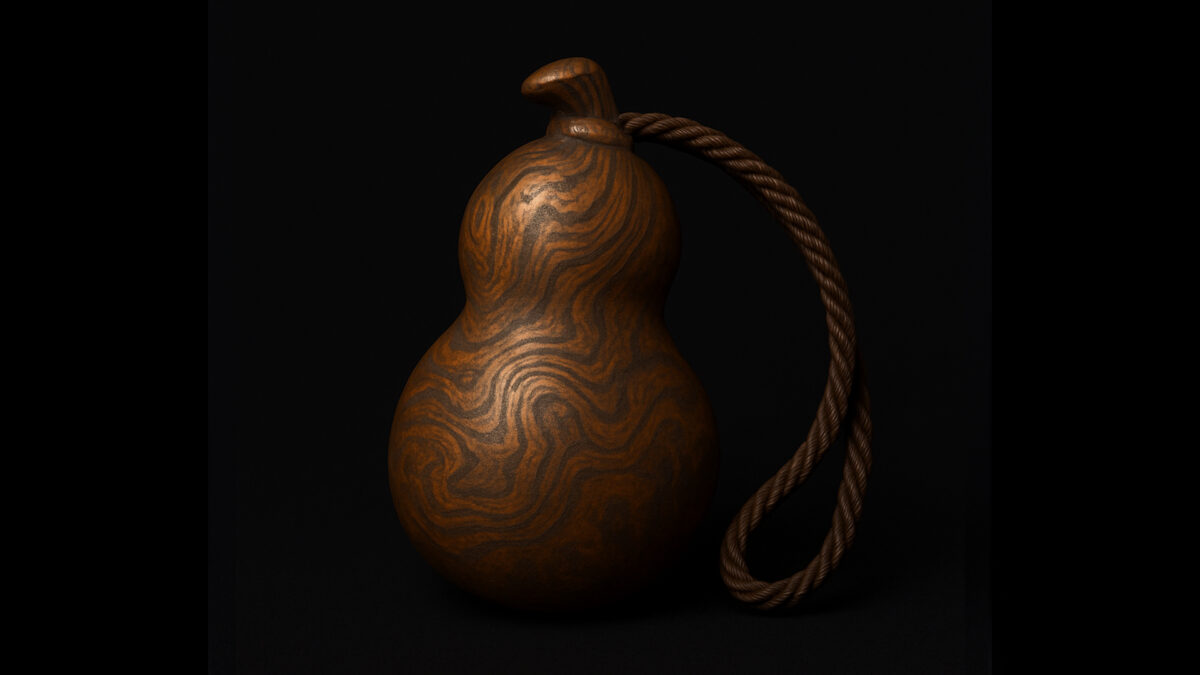Typical Ranges (Precious Metals such as K18, Ag925, etc.)
Application Genre Typical Sheet Thickness per Layer Approximate Number of Layers Jewelry (rings, obi‑dome etc.) 0.3‑0.8 mm ~ 8‑25 layers Sword fittings (tsuba, kozuka, menuki etc.) 0.8‑1.2 mm ~ 6‑12 layers (thicker) Contemporary craft objects / tea utensils 1.0‑2.0 mm (exceptionally thick) ~ 4‑10 layers Thin decorative/inlay work 0.1‑0.3 mm ~ 15‑40 layers (pattern density prioritized)
Real‑World Examples: Adoption by Noted Artists / Workshops (from published sources / interviews)
James Binnion (USA, JBMA)
Sheet thickness examples: Ag, Pd, 14K/18K Gold: 0.4‑0.7 mm
Typical layer count: 18‑24 layers , occasionally 32+ layers
Feature: Slightly varying thickness among different metals to enhance contrast in pattern
Japanese Domestic Workshops (e.g. Mokumegane‑ya, studio SORA, mokumegane workshop enishi )
Average sheet thickness for both Ag925 and K18: about 0.5‑1.0 mm
Layer count: usually 8‑16 layers
Note: Balance between visible pattern and efficiency/yield (how much material is removed vs how much pattern is preserved) is carefully considered
enishi has stated in past interviews that they sometimes use 0.4 mm sheets
Sword fittings / Traditional technique cases
Using metals such as shakudō, shibuichi, copper, etc., layered at 1.0‑1.2 mm thickness so they can endure deep carving
Some techniques reduce the number of layers intentionally, using thicker layers which are “waved” or deformed for patterning (“coarser” pattern)
Relationship Between Sheet Thickness, Pattern, and Workability (Design Decision Points)
Property Thin Sheets (≈ 0.2‑0.4 mm) Thick Sheets (≈ 0.8‑1.2 mm or more) Possible number of layers Many layers possible Fewer layers (due to overall thickness limitations) Fineness of pattern More delicate / fine detail Bolder, more rugged patterns possible Ease of bonding / joining Bonding tends to be easier / more uniform pressure distribution Greater risk of internal defects unless joints are well controlled Amount of material removal (carving) Less removal needed; lighter finished piece More removal possible; allows deeper carving and more robust relief Risk of delamination / peeling Lower (smaller stresses in thinner layers) Higher (especially if bonding or heat treatment uneven)
Reasons Why 0.4 mm Sheets Are Often Used for K18 / Ag925
This thickness is standard among rolled/got stock materials commercially available, hence relatively easy to source
Offers flexible design: not so thin that patterns are fragile; not so thick that detail is lost
Good balance among number of layers, overall thickness, control of hand processing and bonding
Practical Recommendations If You Want to Try Making Mokume‑Gane
Intended Work Recommended Sheet Thickness Reason / Benefit Small jewelry (rings, pendants, obi‑dome etc.) 0.4‑0.6 mm Allows fine detail, adequate layer count, relatively lightweight finished piece Ornamental swords fittings / tea utensils / larger decorative uses 0.8‑1.2 mm Stronger for deep carving / three‑dimensional relief, pattern remains visible after carving When pattern is the main focus (maximizing layer count, very fine detail) 0.2‑0.3 mm Many more layers possible; extremely fine pattern; but labor increases steeply
Conclusion
For K18 and Ag925 mokume‑gane, 0.4 mm is a standard, well‑balanced choice among professional artists: it offers a good trade‑off between pattern visibility and workability. If you want more “weighty” or dramatic patterns, increasing sheet thickness (for the precious metal layers) to 0.6‑0.8 mm may be advantageous.

